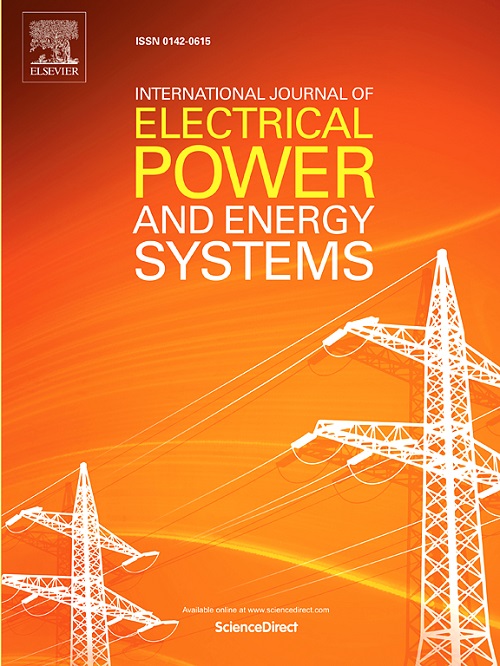一种基于实时特征提取和深度学习模型的非侵入式负荷监测算法
IF 5
2区 工程技术
Q1 ENGINEERING, ELECTRICAL & ELECTRONIC
International Journal of Electrical Power & Energy Systems
Pub Date : 2025-04-22
DOI:10.1016/j.ijepes.2025.110637
引用次数: 0
摘要
研究人员越来越关注非侵入式负荷监测(NILM)作为一种具有成本效益的替代侵入式负荷监测(ILM)的智能家居能源监测。然而,大多数NILM研究假设固定数量的器具,并相应地调整分类模型。这种方法忽略了家庭中设备数量变化的现实,这可能会显著影响模型的准确性。为了解决这一局限性,在本研究中,对所提出的模型和现有方法进行了全面的比较。结果表明,该模型在UK-DALE和EMBED数据库上的准确率分别提高了9.492%和8.386%,优于现有方法。与传统方法相比,该模型的准确率达到了99.74%,明显优于其他模型(95.11%、92.09%、88.70%和75.38%)的较低准确率。该创新将基于软筛选停止准则经验模态分解(SSSC-EMD)的两阶段特征提取方法与具有架构调整能力的自适应深度学习模型相结合,以提高不同条件下家电检测的性能和准确性。本文章由计算机程序翻译,如有差异,请以英文原文为准。
A non-intrusive load monitoring algorithm based on real-time feature extraction and deep learning model
Researchers are increasingly interested in Non-intrusive Load Monitoring (NILM) as a cost-effective alternative to Intrusive Load Monitoring (ILM) for smart home energy monitoring. However, most NILM studies assume a fixed number of appliances and adjust classification models accordingly. This approach disregards the reality of varying appliance numbers in households, which can significantly impact model accuracy. To address this limitation, in this study, a comprehensive comparison between the proposed model and existing methods is conducted. The results show that the proposed model outperforms the existing methods on the UK-DALE and EMBED databases with an accuracy increase of 9.492% and 8.386%, respectively. Also, the accuracy of the proposed model has reached 99.74% compared to conventional methods, which shows its significant superiority over the lower accuracies of other models, including 95.11%, 92.09%, 88.70%, and 75.38%. This innovation combines a two-stage feature extraction method based on Soft Sifting Stopping Criterion Empirical Mode Decomposition (SSSC-EMD) and an adaptive deep learning model with architecture tuning capabilities, in order to improve the performance and accuracy of home appliance detection under different conditions.
求助全文
通过发布文献求助,成功后即可免费获取论文全文。
去求助
来源期刊
CiteScore
12.10
自引率
17.30%
发文量
1022
审稿时长
51 days
期刊介绍:
The journal covers theoretical developments in electrical power and energy systems and their applications. The coverage embraces: generation and network planning; reliability; long and short term operation; expert systems; neural networks; object oriented systems; system control centres; database and information systems; stock and parameter estimation; system security and adequacy; network theory, modelling and computation; small and large system dynamics; dynamic model identification; on-line control including load and switching control; protection; distribution systems; energy economics; impact of non-conventional systems; and man-machine interfaces.
As well as original research papers, the journal publishes short contributions, book reviews and conference reports. All papers are peer-reviewed by at least two referees.

 求助内容:
求助内容: 应助结果提醒方式:
应助结果提醒方式:


